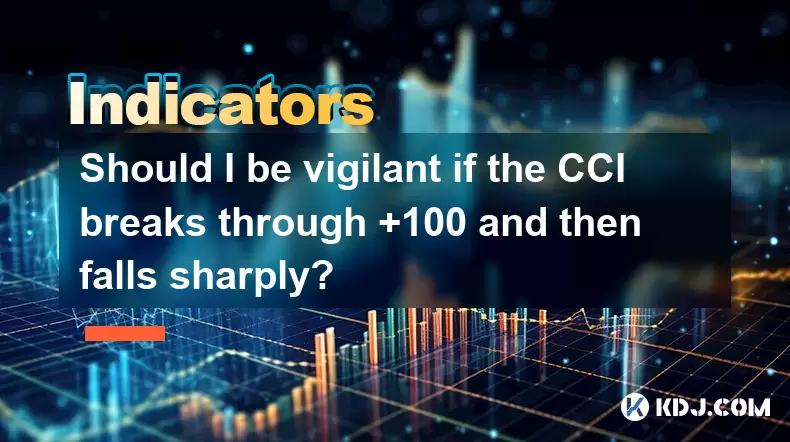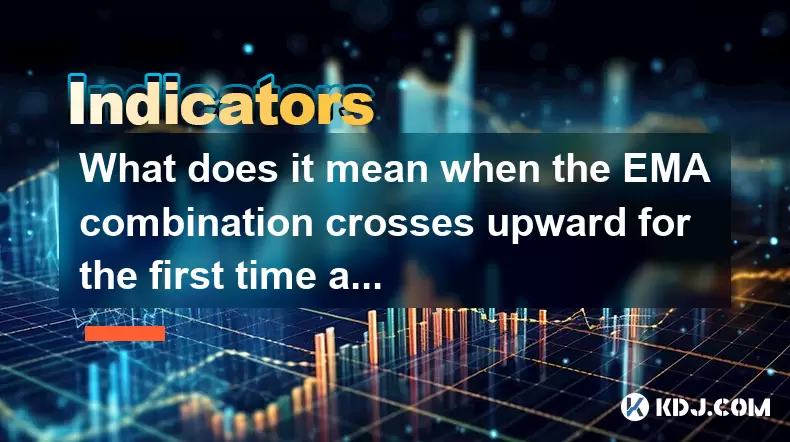-
 Bitcoin
Bitcoin $118600
0.36% -
 Ethereum
Ethereum $3855
1.06% -
 XRP
XRP $3.195
-0.09% -
 Tether USDt
Tether USDt $1.000
-0.04% -
 BNB
BNB $844.5
6.23% -
 Solana
Solana $191.3
2.83% -
 USDC
USDC $0.9997
-0.01% -
 Dogecoin
Dogecoin $0.2376
0.10% -
 TRON
TRON $0.3242
0.83% -
 Cardano
Cardano $0.8222
0.13% -
 Hyperliquid
Hyperliquid $45.26
6.53% -
 Sui
Sui $4.200
-2.56% -
 Stellar
Stellar $0.4336
-1.24% -
 Chainlink
Chainlink $18.86
0.28% -
 Hedera
Hedera $0.2796
-1.75% -
 Bitcoin Cash
Bitcoin Cash $583.3
-1.84% -
 Avalanche
Avalanche $27.06
8.09% -
 Litecoin
Litecoin $112.3
-1.16% -
 Toncoin
Toncoin $3.353
0.58% -
 UNUS SED LEO
UNUS SED LEO $8.968
-0.11% -
 Shiba Inu
Shiba Inu $0.00001395
-0.54% -
 Ethena USDe
Ethena USDe $1.001
-0.03% -
 Uniswap
Uniswap $10.76
0.69% -
 Polkadot
Polkadot $4.175
0.26% -
 Monero
Monero $326.7
1.07% -
 Bitget Token
Bitget Token $4.665
1.61% -
 Dai
Dai $0.9998
-0.02% -
 Pepe
Pepe $0.00001271
0.32% -
 Cronos
Cronos $0.1416
2.01% -
 Aave
Aave $299.3
1.15%
Should I be vigilant if the CCI breaks through +100 and then falls sharply?
A sharp drop in CCI after breaking above +100 may signal weakening momentum and a potential trend reversal in crypto markets.
Jun 17, 2025 at 12:14 am

Understanding the Commodity Channel Index (CCI) in Cryptocurrency Trading
The Commodity Channel Index (CCI) is a technical indicator commonly used by cryptocurrency traders to identify overbought and oversold conditions, as well as potential trend reversals. It oscillates above and below a zero line and typically ranges between -100 and +100. When the CCI crosses above +100, it suggests that the asset may be overbought, while a move below -100 indicates oversold conditions.
In the context of cryptocurrencies, which are known for their high volatility and rapid price swings, the CCI can be particularly useful for detecting momentum shifts. However, due to the speculative nature of digital assets, false signals can occur frequently. Therefore, understanding how to interpret a sharp drop after a CCI breakout above +100 is crucial for traders aiming to make informed decisions.
Important:
The CCI alone should not be used in isolation but rather in conjunction with other indicators and chart patterns to confirm signals.What Happens When CCI Breaks Above +100?
When the CCI breaks through the +100 level, it often indicates strong upward momentum in the market. This could mean that the cryptocurrency is experiencing a surge in buying pressure or positive sentiment. In many cases, this breakout may coincide with news events, macroeconomic factors, or broader market trends influencing investor behavior.
However, a breakout above +100 does not necessarily guarantee continued bullish movement. It's essential to monitor how the price reacts following this signal. If the price continues to rise alongside the CCI, it reinforces the strength of the uptrend. Conversely, if the CCI rises sharply above +100 and then begins to fall rapidly while the price stalls or reverses, it could signal a weakening of the bullish momentum.
- Observe volume during the breakout.
- Check if the price action supports the momentum shown by the CCI.
- Evaluate whether resistance levels are being tested or broken.
Why a Sharp Drop After a CCI Breakout Matters
A sharp decline in the CCI after surpassing +100 may indicate that the initial buying pressure is dissipating. This kind of divergence—where the CCI starts to fall while the price remains elevated or even rises slightly—can serve as an early warning sign of a potential reversal.
This phenomenon is especially relevant in highly volatile cryptocurrencies like Bitcoin, Ethereum, or altcoins, where momentum-driven rallies can quickly lose steam. A falling CCI suggests that the number of buyers is decreasing and that sellers might soon take control.
Traders should pay attention to:
- Candlestick patterns forming at key resistance levels.
- Divergence between the CCI and price movements.
- Volume contraction during the CCI descent.
If these elements align, it strengthens the case for a possible pullback or consolidation phase.
How to Respond to a Rapid CCI Decline Post-Breakout
Upon observing a rapid drop in CCI after a +100 breakout, traders have several strategic options depending on their risk tolerance and trading style. Here’s how you can approach such a scenario:
- Take partial profits if you’re already long and the rally has been significant.
- Consider tightening stop-loss orders to protect gains in case of a sudden reversal.
- Look for bearish candlestick formations like shooting stars, hanging men, or engulfing patterns near resistance zones.
- Use moving averages or RSI to cross-validate the weakening momentum.
- Wait for a confirmed close below critical support levels before initiating short positions.
Each of these steps helps mitigate the risks associated with false breakouts and allows traders to act more decisively based on real-time data rather than speculation.
Common Misinterpretations of CCI Signals in Crypto Markets
One of the most common mistakes made by novice traders is treating the CCI crossing +100 as a sell signal or -100 as a buy signal without considering broader market context. In crypto markets, especially during strong trending phases, the CCI can remain in overbought or oversold territory for extended periods.
Another misstep involves ignoring the timeframe mismatch. A trader using a daily chart might see a CCI reading above +100 and assume a reversal is imminent, while the hourly chart shows a continuation pattern. It’s important to analyze multiple timeframes and ensure alignment across them.
Additionally, many overlook the importance of volume confirmation. A CCI spike above +100 accompanied by low volume may suggest a lack of conviction behind the move, increasing the likelihood of a retracement.
Frequently Asked Questions
Q: Can I rely solely on CCI for making trading decisions in crypto?
While the CCI is a powerful tool, relying solely on it can lead to misleading signals. Always combine it with other tools such as moving averages, RSI, MACD, and volume analysis to improve accuracy.
Q: What timeframe is best for interpreting CCI signals in crypto?
There is no single "best" timeframe. Short-term traders may use 1-hour or 4-hour charts, while swing traders might prefer daily charts. Use multiple timeframes to validate signals and avoid conflicting interpretations.
Q: Is a CCI drop from above +100 always bearish?
Not necessarily. Sometimes the CCI retreats into neutral territory (+100 to 0) without triggering a full reversal. Watch for signs of consolidation or sideways movement before drawing conclusions.
Q: How do I distinguish between a normal pullback and a trend reversal using CCI?
Look for divergences between price and CCI, changes in volume, and whether key support/resistance levels are holding. A true reversal often includes a breakdown below previous support or failure to make new highs.
Disclaimer:info@kdj.com
The information provided is not trading advice. kdj.com does not assume any responsibility for any investments made based on the information provided in this article. Cryptocurrencies are highly volatile and it is highly recommended that you invest with caution after thorough research!
If you believe that the content used on this website infringes your copyright, please contact us immediately (info@kdj.com) and we will delete it promptly.
- Pepe Dollar vs. Bitcoin HYPER: The Crypto Supercycle Meme Showdown
- 2025-07-29 01:10:12
- BlockDAG, BNB, DOGE: The New York Minute on 2025's Crypto Frontrunners
- 2025-07-29 01:50:12
- AVAX, Solana, and the AI Token Surge: What's Hot and What's Not
- 2025-07-29 01:50:12
- XRP Price Surge Potential: Chart Analysis and What's Next
- 2025-07-29 01:55:48
- Crypto Investments, Dogecoin Substitutes, and Wealthy Returns: Navigating the Meme Coin Mania and Beyond
- 2025-07-29 00:30:13
- Iron Age Treasures: Coins and Brooches in the Test Valley
- 2025-07-29 01:55:48
Related knowledge

What does it mean when the EMA combination crosses upward for the first time after sideways trading?
Jul 28,2025 at 03:43pm
Understanding the EMA and Its Role in Technical AnalysisThe Exponential Moving Average (EMA) is a widely used technical indicator in cryptocurrency tr...

What signal does the ROC send when it rises rapidly from a low level and breaks through the zero axis?
Jul 27,2025 at 10:15am
Understanding the Rate of Change (ROC) IndicatorThe Rate of Change (ROC) is a momentum-based oscillator used in technical analysis to measure the perc...

What does it mean when the price breaks through the double bottom neckline and the moving averages are arranged in a bullish pattern?
Jul 28,2025 at 10:57am
Understanding the Double Bottom PatternThe double bottom is a widely recognized reversal chart pattern in technical analysis, particularly within the ...

What signal does the DMA fast line cross the slow line above the zero axis?
Jul 28,2025 at 05:42am
Understanding the DMA Indicator and Its ComponentsThe DMA (Difference of Moving Averages) indicator is a technical analysis tool used in cryptocurrenc...

What does it mean that the rebound is blocked after the moving average is arranged in a short position for the first time?
Jul 26,2025 at 10:51am
Understanding the Short-Term Moving Average ConfigurationWhen traders refer to a 'short position arrangement' in moving averages, they are describing ...

What does it mean that the ZIGZAG low point is raised and the high point breaks through the previous peak?
Jul 28,2025 at 03:28am
Understanding the ZIGZAG Indicator in Cryptocurrency TradingThe ZIGZAG indicator is a technical analysis tool widely used in cryptocurrency trading to...

What does it mean when the EMA combination crosses upward for the first time after sideways trading?
Jul 28,2025 at 03:43pm
Understanding the EMA and Its Role in Technical AnalysisThe Exponential Moving Average (EMA) is a widely used technical indicator in cryptocurrency tr...

What signal does the ROC send when it rises rapidly from a low level and breaks through the zero axis?
Jul 27,2025 at 10:15am
Understanding the Rate of Change (ROC) IndicatorThe Rate of Change (ROC) is a momentum-based oscillator used in technical analysis to measure the perc...

What does it mean when the price breaks through the double bottom neckline and the moving averages are arranged in a bullish pattern?
Jul 28,2025 at 10:57am
Understanding the Double Bottom PatternThe double bottom is a widely recognized reversal chart pattern in technical analysis, particularly within the ...

What signal does the DMA fast line cross the slow line above the zero axis?
Jul 28,2025 at 05:42am
Understanding the DMA Indicator and Its ComponentsThe DMA (Difference of Moving Averages) indicator is a technical analysis tool used in cryptocurrenc...

What does it mean that the rebound is blocked after the moving average is arranged in a short position for the first time?
Jul 26,2025 at 10:51am
Understanding the Short-Term Moving Average ConfigurationWhen traders refer to a 'short position arrangement' in moving averages, they are describing ...

What does it mean that the ZIGZAG low point is raised and the high point breaks through the previous peak?
Jul 28,2025 at 03:28am
Understanding the ZIGZAG Indicator in Cryptocurrency TradingThe ZIGZAG indicator is a technical analysis tool widely used in cryptocurrency trading to...
See all articles

























































































